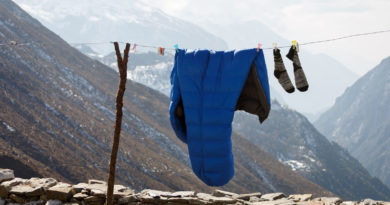How To Pack Your Tent For Backpacking?
Backpacking is one of the most popular and most loved outdoor activities. But any backpacking lover would know how important it is to pack your backpack in a proper manner. Too often, we see people with improperly packed bags on a backpacking trip with more things hanging on the outside than placed inside.
Backpacking is not just an activity; it is a starting point of a camping trip and it determines how the camping trip will go about. It is a science! A well-packed, balanced backpack can be a great relief on your back and shoulders. But one of the most asked questions among novice backpackers is how to pack your tent. This guide will provide you with useful information on how to do that.
Selecting a Backpack
Selecting the right backpack is the most important task for backpacking. You should make sure that you choose a backpack that fits all your needs. The selection of a backpack is based on where you are going to pack your tent in a backpack, that is, either inside or outside.
If you haven’t already chosen a backpack, then I would recommend going for an internal frame backpack like the Osprey Atmos AG. An internal frame backpack has many benefits over an external frame. The internal frame provides excellent support ensuring no wobble while walking; there is no need to keep the bag upright and an internal frame provides more space.
External frame backpacks are great when you want to attach the tent outside of the backpack. The differences between an internal frame and an external frame are very clear with an external frame backpack having many compression straps outside for hanging things.
If you already have a backpack and don’t want to spend money on another one, you can use compression bags to pack the tent if the backpack is a bit small for the tent. A compression bag helps pack the bag smaller and tighter.
Packing the Tent inside the Backpack
As I mentioned above, an internal frame backpack is a good option if you want to pack the tent inside the backpack. Here are the steps required to pack the tent inside of a backpack:
1. Lay the Tent on the Ground
Lay the tent flat on the ground. Pack the poles in the bag they came in and line the bag on the bottom or side of the tent. Poles form support as the tent is packed away.
2. Roll the Tent
By using the pole bag, start rolling the tent while making sure that the pole bag stays in line with the side it’s on. This way, the tent will roll straight and it can be rolled tight. The pole bag provides support and a base for the tent. After a few rolls, place the peg bag in a similar position to the pole bag and keep rolling up until you are done such that the bags are packed in the middle. This provides a lot of support in the center making it easy to carry the tent in the bag.
3. Stuff the Tent inside its Bag
Open the bag in which the tent came and place the rolled tent inside it. Do not pack the tent if it’s wet. A wet tent is heavier and it can develop molds and mildews. If the tent is wet, dry it before packing. Some hikers carry a shammy cloth to wipe the tent making it dry enough to pack.
4. Heavy and Light Items
Hiking and backpacking involve a lot of walking so the bag you are packing should only weigh 30% of your total body weight. Light items should be placed at the top while the heavier items should be at the bottom. This will keep your lower back and shoulder from developing any pain. However, you should always try to distribute the weight equally throughout the bag. Try packing the tent in the middle of the backpack.
5. Sleeping Bag and Pad
Make sure to always pack the sleeping bags, pads, and quilts first. This way they are packed at the bottom of the backpack and are taken out last. The tent should be placed immediately above the sleeping bag or as close to the sleeping bag as possible. The tent can be placed vertically or horizontally in the backpack. A vertically placed tent is more accessible and a horizontally placed tent makes it easy to pack other things on top of the tent.
Attaching the Tent outside the Backpack
You can attach the tent outside of the backpack in these easy steps:
1. Protect the Bag
Although tents are waterproof, if they get wet in the rain or due to any other reason, they can cause a lot of problems for you. To prevent the tent from getting wet, store it in a zip lock bag or a waterproof bag to ensure extra protection.
2. Check the Compression Straps
Both external frame backpacks and internal frame backpacks have compression straps to attach the tent outside of the backpack. You should check and make sure that the frame and the compression straps of the backpack are in good working condition.
3. Secure the Bag Further
To further secure the tent, loop ties can be used. Loop ties ensure that the bag remains attached to the backpack even if it slides off. This will further add to your peace of mind that your tent is secure.
4. Attach the Tent at the Bottom
It is best to attach the bag to the bottom of the backpack. External frame backpacks usually come with a bottom attachment for tents. Attaching the tent at the bottom lowers the center of gravity of the overall backpack which puts less strain on the back and makes walking easier.
Disadvantages of attaching the Tent outside of the Bag
There are some obvious disadvantages to attaching the tent to the outside of the backpack:
- The biggest disadvantage is that the tent attached outside of the backpack is at risk of getting damaged by sharp objects like branches and thorns which can cut your tent and ruin it.
- Even if you properly secure the tent, there will always be a risk of your tent falling off the bag. You will have complete peace of mind when the tent will be packed inside the backpack rather than outside of it.
- There are chances that your tent might get wet in the rain or if you go through areas with water like waterfalls, streams, etc. Even with protection bags, there are still chances that the tent might get wet.




